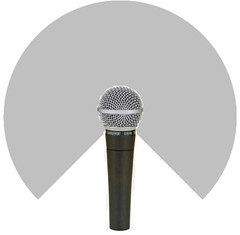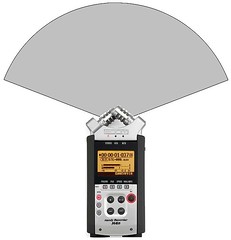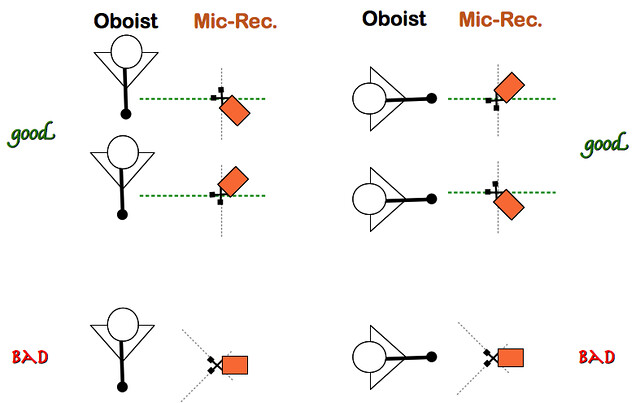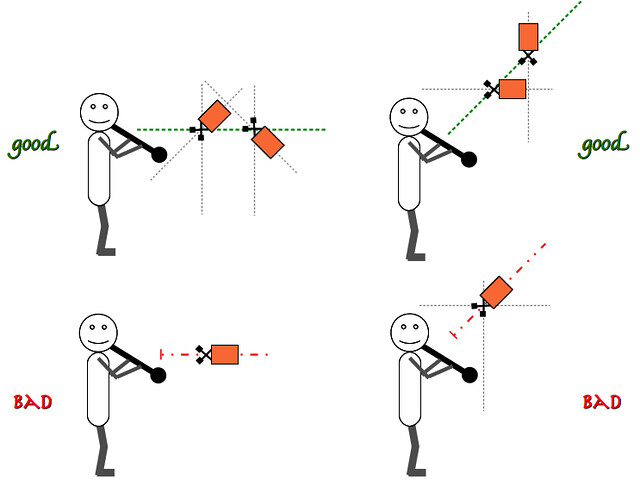I followed the advice of Craig Matovitch on microphone placement and put my recording device on a cheap tripod which I put on my desk. This way, the desk table is not blocking out half the sound waves! I found the experiment very much worth while: it really helps create a more living sound, even in my stuffy study/studio.
The following observations pertain to recording the oboe at home. If you record voice or another instrument, or if you have a sound engineer working in a studio or concert hall, all these observations might be completely useless.
1-2 microphones & different ranges of sound capture:
There is a lot to know about microphones (basics of it here)… too much for the home-recording amateur! Still, a few simple considerations can spare a lot of wasted time and frustrated efforts:
- How many microphones on your recording device?
- What is the area coverage (capture angle) of the microphone (or set of microphones)?
Good quality recording devices are practical because they contain the microphone, recording and playback capabilities all in one gadget: no computer, no cables, nothing cumbersome to carry. The better ones have 2 microphones for stereo sound capturing (better approximate what we hear with 2 ears). There are different types of microphone and there is a full vocabulary to describe them. In a nutshell, and in common language, we can think of 3 considerations:
- close and far range sensitivity,
- wide area coverage or focussed point sound capture,
- different ranges of frequency sensitivities.
The frequency sensitivities can be understood as follows: some microphones are better suited to percussion, others to tubas, others to piccolos and others for voice. In fact, the best web-cams for tele-conferencing focus on clear spoken voice, but they are terrible for recording the oboe!
For range and coverage, this table should explain well enough; click on the image for more explanations.
 |  |
 |  |
Angle for true oboe sound and the atmosphere of a lively hall.
The last consideration for home-recording is how to capture the truest sound of the oboe and get a lively atmosphere. For this, I can only say that pointing one microphone directly to the oboe will get the right sound and the other microphone will pick-up room reverberation for the atmosphere. It is difficult to say whether it is best to point the other microphone points forward, up, down or backwards, the results will change according to the room layout, proximity to walls and so on. A few minutes of sound sampling is a worthwhile experiment. I have also found that the microphone below or behind the instrument adds a lot of buzz to the recording. Otherwise, the following images should be clear enough.

No comments:
Post a Comment